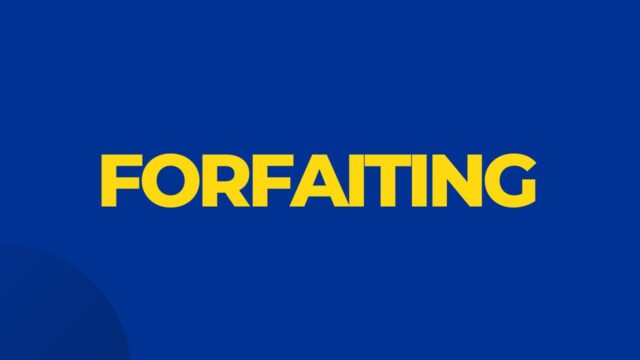
What is forfaiting and how does it work
Forfaiting is a way of financing international trade by reducing the risk to the buyer. In forfaiting, the seller agrees to accept a discounted payment in exchange for an upfront payment. This discount is typically between 2% and 5%. The buyer then pays the full value of the invoice to the forfaiter, who in turn pays the seller the discounted amount. The forfaiter assumes the risk that the buyer will not pay the invoice, but this risk is generally small because buyers are typically large, well-established companies. Forfaiting can be a useful tool for businesses that engage in international trade, as it allows them to receive upfront payments and reduce their exposure to risk.
The benefits of forfaiting
Forfaiting is a financing arrangement in which a buyer agrees to purchase goods from a seller without paying for them upfront. In exchange, the seller agrees to accept payment at a later date. This type of arrangement can be beneficial for both buyers and sellers. For buyers, it enables them to take possession of the goods immediately, without having to wait for payment. This can be helpful if the goods are needed urgently. For sellers, forfaiting can provide a way to receive payment for goods that would otherwise be difficult to finance. In addition, forfaiting can help to reduce costs by eliminating the need for intermediaries. As a result, it is an increasingly popular financing option for international trade.
How to get started with forfaiting
In order to get started with forfaiting, companies need to have an export invoice that they can use as collateral. The buyer of the receivable will then pay the company the full value of the invoice minus a fee, which is typically between 2-5%. Forfaiting can be a useful tool for companies that are looking for alternative financing options, as it allows them to receive immediate payment for their exports. However, it is important to note that forfaiting is a high-risk form of financing, and companies should only consider using it if they have strong creditworthy buyers.
Case studies of forfaiting in action
One famous case study of forfaiting involved the sale of important historical documents. In 2001, the French government sold a collection of letters written by Napoleon Bonaparte to a private collector for €8 million. The collection was then sold to a British bank for €10 million, who in turn sold it to an American museum for €12 million. The French government was able to raise the €8 million it needed up front, without having to wait for the buyers to pay. In addition, the buyers were able to benefit from the discounted price, since they did not have to pay the full €12 million price tag up front. As a result, forfaiting can be an advantageous arrangement for both sellers and buyers.
Glossary of terms associated with forfaiting
When engaging in forfaiting, there are a number of specialized terms that it is important to be familiar with. Here is a brief overview of some of the most commonly used terms:
Asset-backed security: A financial asset that is backed by a physical asset, such as a loan or mortgage.
Factoring: The process of selling an asset, such as an invoice, in order to receive immediate payment.
Forfaiting: The purchase of an asset, such as an invoice, with the agreement that payment will be made at a later date.
Maturity date: The date on which payment is due for an asset that has been purchased through forfaiting.
Non-recourse financing: A type of financing in which the lender does not have the right to reclaim the asset if the borrower defaults on the loan.
This is just a small sampling of the specialized vocabulary that is used in forfaiting transactions. By becoming familiar with these and other terms, you can help to ensure that you are able to confidently engage in forfaiting agreements.


































